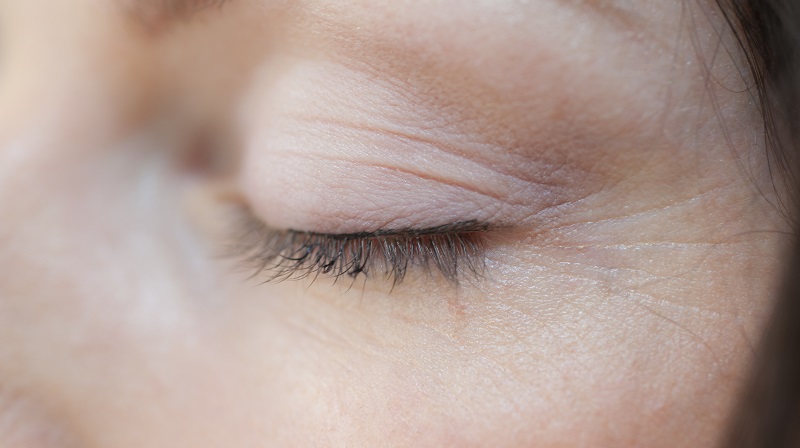
One of the best ways to catch potential skin cancer growths is by performing a self-check and looking for any moles that are discolored or larger in size. However, even with the assistance of a mirror, there are some areas of our body that are difficult to check or often overlooked when it comes time to perform a self-check. One such area that is often overlooked is your eyelids.
Your eyelids help to protect your eyes, arguably the most important of the five senses, but they aren’t indestructible. In fact, because of your eyelids’ thin design, they are actually extremely vulnerable to the sun’s ultraviolet rays. Combine with the fact that when it’s sunny out, you’re probably squinting to keep the sun out of your eyes, which in turn leaves more eyelid exposed to the sun, it should come as no surprise that the eyelid and around the eyelid are hotspots for cancer development.
Preventing Eyelid Cancer
Preventing eyelid cancer follows many of the same tips and ideas as preventing skin cancer on any part of your body, but there are some extra things you need to be aware of. For example:
- Hats Are Great – Hats help keep the sun out of your eyes because if you’re squinting to shield your eyes from the sun, your eyelids are exposed to harmful UV rays.
- Sunscreen – Even if you get your face when applying sunscreen, a lot of people forget to hit their eyelids, or they ignore the space because they are afraid of sensitivity issues. Don’t forget to get your eyelids, and look for sensitive skin brands if you’re concerned it may irritate your eyes.
- UV-Blocking Sunglasses – Another great way to protect your eyelids from harmful rays is to invest in a pair of sunglasses with UV-blocking lenses.
- Self-Checks – When performing self-assessments, be sure that you are taking the time to check each eyelid for signs of potential sun damage.
Diagnosis and Treatment of Eyelid Cancer
If you notice a growth or mole around the eyelid, have it looked at by a skin cancer specialist like Dr. Koeplin. The majority of skin cancers near the eyes are basal cell carcinomas (BCCs), but your specialist will conduct some tests to figure out the exact type. BCCs rarely spread to the lymph nodes, but a smaller percentage of cancer called a squamous cell carcinoma has a higher chance of spreading, so an accurate diagnosis is key.
The good news is that because the eyelid is such a common location for skin cancer that most skin cancer surgeons are well-versed in the best treatment techniques. Treatment typically involves surgery using the Mohs technique. During the procedure, the surgeon removes a layer of the tissue from the area and examines it under a microscopic, looking for tumor margins. If any cancer cells remain, they remove another layer of tissue from that location, and this process is repeated under no cancer cells remain.
Not only does the Mohs technique have a very high rate of success, but it also saves the greatest amount of healthy skin tissue and leaves the smallest possible scar. In most instances, the surgery can be performed while the patient has their eyes closed, although the doctor may insert an opaque contact lens if the growth is on an eyelid margin and the eye needs to be open during surgery.
Most eyelids heal great on their own, but there’s a chance that a little extra work needs to be done if the growth is on an eyelid margin or near a tear duct. After the procedure, you may need to wear an eyepatch for a couple days and you may have some minor bruising, but the eye will start to look and feel better after a couple of days. Full healing can take a couple months, but it will look and feel a lot better well before then.
For more information about eyelid cancer and how it’s treated, or to talk to Dr. Koeplin about a concerning growth, reach out to his clinic today.